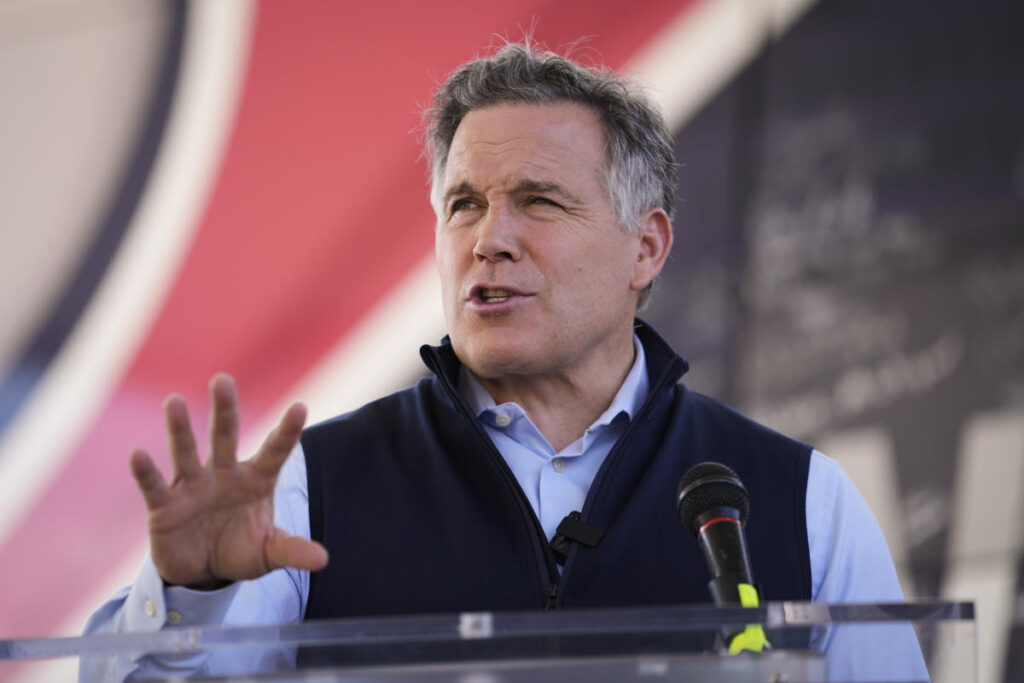The spending habits of Senate Republicans in upcoming races reveal a significant disparity in resource allocation, which does not accurately reflect the broader context of the current battleground map. The focus of their financial efforts is concentrated heavily in a limited number of states, leading to an uneven distribution that may jeopardize their chances in crucial contests. Central to this phenomenon are underperforming fundraising efforts by key candidates and the party’s dependency on large-scale donors to bridge the financial gaps. Consequently, while numerous appealing targets exist for potential gains, the GOP’s ad spending is notably skewed, with an overwhelming amount directed to select races—often ones that are not immediately promising for the party. This disparity can be accounted for by individual candidate dynamics, donor preferences, and the targeted interests of special interest groups that define the current landscape.
One glaring example of this disproportionate spending is the GOP’s investment in Pennsylvania, which has outpaced funding for Michigan, Wisconsin, and Arizona combined. Republican support for former hedge fund CEO Dave McCormick’s campaign against a formidable Democratic incumbent in Pennsylvania exceeds funding levels in similar battlegrounds, revealing a clear strategy that may not align with practical electoral chances. Furthermore, significant resources are allocated to safeguarding Senator Ted Cruz’s Texas seat—considered winnable but not anywhere near as vulnerable as other targets in presidential battlegrounds—again illustrating how Republican spending does not necessarily reflect where the best chances for gains lie. In stark contrast, Arizona’s competitive landscape shows Democratic Rep. Ruben Gallego spending more independently than the entirety of GOP external spending, significantly skewing the potential voting landscape in key battlegrounds.
Despite their desire to contest multiple battlegrounds, a combination of candidate reputations, donor inclinations, and external targeting has produced a heavily uneven playing field. As GOP leaders expressed ambitions to win seats across various critical locations, they find themselves grappling with the realities defined by candidate strengths and non-strategic donor tendencies, which complicates their expenditures. Notably, while major super PACs continued to invest heavily in areas like the Midwest, states like Pennsylvania, due to its high advertising costs during a presidential election year, demanded even more from Republican financial resources, further amplifying this issue. This type of uneven spending could have dire consequences for the GOP heading into November, especially considering their strategy is predicated on flipping just two seats to achieve a Senate majority, with several prime targets already fully funded.
Republicans entered this electoral cycle with high hopes for flipping numerous battleground states, yet their success now hinges significantly on a few hotly contested contests such as Montana and Ohio, where they have adequate backing. Prime candidates in these races, such as Jon Tester in Montana and Sherrod Brown in Ohio, present considerable opportunities for the GOP, given their current funding landscape. However, as the campaign nears the finish line, unexpected discrepancies in budget allocations create vulnerabilities, particularly in states where GOP spending cannot keep pace with their Democratic counterparts. Nevada and Arizona, in particular, have seen significant Democratic spending versus Republican outlays, with some GOP operatives expressing growing concern about their electoral viability based on these financial realities.
As fundraising efforts by Democratic candidates like Senator Sherrod Brown, Elissa Slotkin, and Ruben Gallego have yielded impressive sums, Republican candidates have struggled to match this momentum, often relying on super PACs that lack the efficiency of consolidated candidate campaigns. Advertising rates also add another layer of complexity, as Republican candidates often face obstacles that limit their direct finances, raising questions about the feasibility of their overall strategy. The funding disparity not only shows the gaps in electoral strategy but also suggests a broader need for Republicans to revisit their financial coordination if they hope to emerge victorious in key battlegrounds.
In Maryland, where GOP donors have rallied behind Larry Hogan’s Senate bid, spending levels shockingly surpass those allocated for more competitive states, further exemplifying the disconnect between where donor dollars are invested and the actual battlegrounds. Hogan’s campaign has received substantial ad funding, yet the electoral climate in Maryland—an area overwhelmingly favoring Democrats—questions the viability of this investment strategy. This situation reflects a growing trend within GOP fundraising, as various candidates turn to bespoke super PACs for support, often creating decentralized financial ecosystems that lead to less strategic coordination. Such a fragmented approach to funding may yield reductions in the overall effectiveness of GOP campaign efforts, raising critical questions for future fundraising strategies and the GOP’s electoral prospects in the long term.
In conclusion, the current landscape of Republican spending in Senate races presents a puzzling yet revealing picture of the party’s strategic challenges and financial dynamics. The concentration of resources in select states, particularly Pennsylvania, highlights a mismatch between financial allocation and practical electoral realities; meanwhile, immense funding disparities with Democratic opponents underscore the need for strategic reevaluation as November looms. While potential paths to a Senate majority remain intact through carefully selected seats, the effectiveness of current campaign efforts is increasingly at risk due to uneven spending, reliance on super PACs, and the unpredictability of donor preferences. As Republicans grapple with these issues, it will be essential to consider how their financial strategies could adapt in response to the rapidly evolving political landscape and ultimately impact their standing in upcoming elections.

